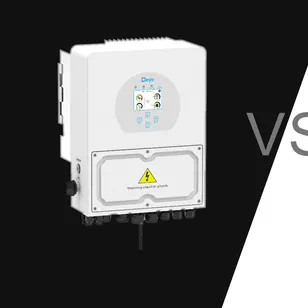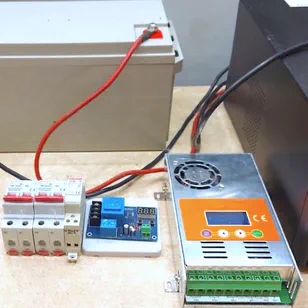Introduction
When setting up a solar power system, connecting your home to the grid, or wiring any electrical load, you’ll face a crucial decision: copper or aluminum wiring? While conventional wisdom often favors copper, the significantly higher cost of copper wiring products can be a major obstacle. Let’s explore when to invest in copper and where aluminum might be a more cost-effective choice.
The Case for Copper
Copper wiring is preferred in most applications where budget allows. It offers several advantages:
- Longer lifespan
- Greater mechanical strength
- Higher current-carrying capacity compared to aluminum of the same gauge
The main drawback? Cost. The price difference between copper and aluminum can be substantial.
Learn about the components of a solar power station
Cost Comparison Example
Let’s consider a scenario where we need to run a 100-meter cable (three phases plus neutral) to a remote pump station with a maximum current draw of 30 amperes per phase:
- Copper option: 4x4mm² VVG cable ≈ $3 per meter
- Aluminum option: 4x6mm² AVVG cable ≈ $0.85 per meter
For this 100-meter run, copper would cost about $300, while aluminum would be under $100. That’s a $200 saving on a relatively small amount of cable!
When to Use Aluminum
Despite copper’s advantages, there are situations where aluminum wiring makes sense:
Long-distance runs: The longer the cable run, the more you can save by using aluminum.
Larger gauge requirements: As the required wire gauge increases, so does the potential cost savings with aluminum.
Outdoor applications: Aluminum is often used in outdoor wiring, such as for connecting solar panels or in utility distribution lines.
A Hybrid Approach
For optimal cost-efficiency without compromising on performance, consider a hybrid approach:
- Use specialized copper solar cable for short runs from the panels.
- Transition to aluminum for long runs (e.g., from a remote solar array to the inverter).
- Switch back to copper for the final connection to the inverter.
This method can provide significant savings on longer installations while maintaining the benefits of copper at critical connection points.
Discover tips for optimizing solar panel installation on east-west roofs
Aluminum in Modern Electrical Systems
Aluminum still plays a crucial role in many electrical applications:
Aerial Bundled Cable (ABC): The power lines bringing electricity to most homes are primarily made of aluminum, with only a steel core for added strength.
Large-scale power distribution: Aluminum is widely used in power transmission lines due to its lower weight and cost.
Environmental Considerations
Choosing aluminum over copper where appropriate can have positive environmental impacts:
- Resource conservation: Copper is much less abundant than aluminum on Earth.
- Energy efficiency: Aluminum production can be more energy-efficient than copper mining and refining.
Safety Considerations
When using aluminum wiring, keep these safety tips in mind:
- Proper sizing: Always use the correct gauge of aluminum wire for the intended current load.
- Special connectors: Use connectors and terminals specifically designed for aluminum wiring.
- Regular inspections: Periodically check aluminum wire connections for signs of oxidation or loosening.
Learn about protecting home appliances from power surges
Conclusion
While copper wiring remains the gold standard for electrical installations, aluminum has its place in modern electrical systems, especially for long runs and outdoor applications. By strategically combining both materials, you can optimize your electrical installations for both performance and cost-efficiency.
Remember, the key is to use the right material for each part of your system, taking into account factors like distance, current load, environment, and budget. Always consult with a qualified electrician to ensure your wiring choices meet local codes and safety standards.
By making informed decisions about your wiring materials, you can build efficient, safe, and cost-effective electrical systems for your home or solar installation.




